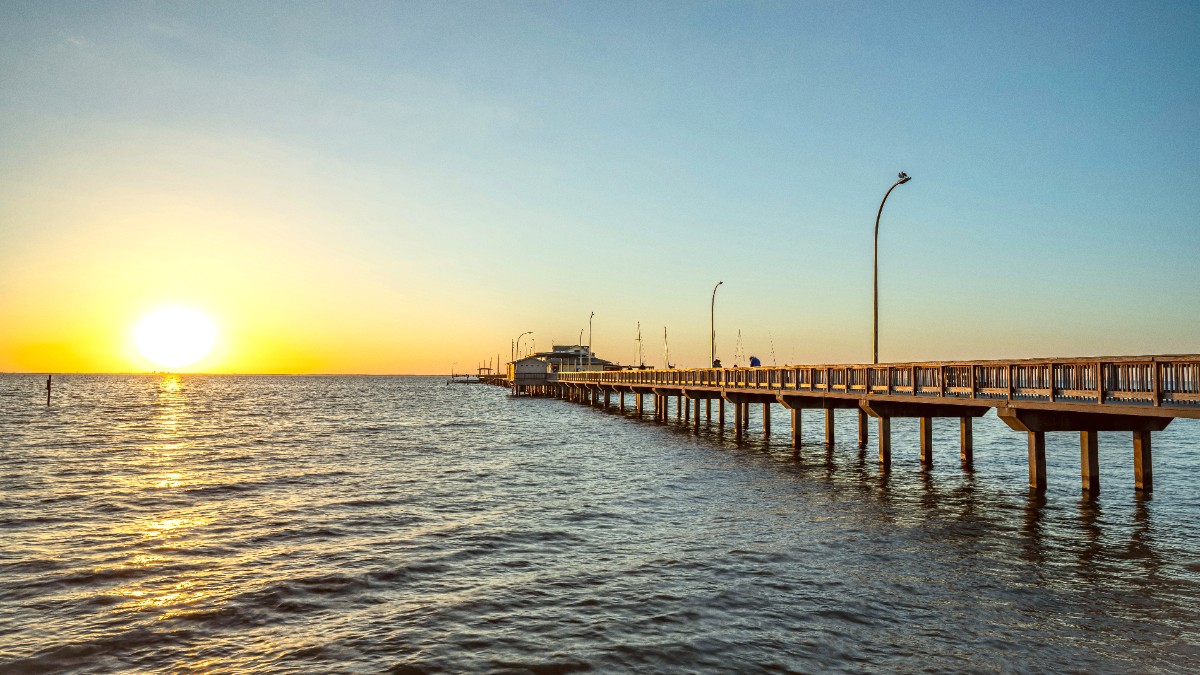
Alabama, USA
The allure of Mobile Bay extends beyond its picturesque vistas. It lies in the character of its people, renowned for their warm Southern hospitality, ready to share stories and extend a genuine welcome. This spirit permeates the local atmosphere, from bustling downtown markets to quiet, historic neighborhoods. You find a destination where traditions are honored, and community thrives, creating an environment that feels both inviting and authentic.
Mobile Bay presents both relaxation and adventure. Spend quiet afternoons strolling through lush gardens, or embark on a thrilling fishing charter on the bay. Wander through charming historic districts, or join a lively downtown celebration.
The variety ensures every day brings an opportunity for something new. This guide details activities to match your preferences and make the most of every moment.
Mobile Bay occupies a distinct geographical position on the northern Gulf of Mexico, making it an unique and ecologically rich estuary. This large, shallow inlet forms at the mouth of the Mobile-Tensaw River Delta, one of the largest and most biologically diverse river deltas in the United States. The bay itself stretches approximately 31 miles long and 24 miles wide, creating a vast body of water where freshwater rivers meet the saltwater of the Gulf. This convergence creates a brackish environment, a productive nursery for many marine species.
The bay's geography directly shapes its climate and natural features. Its coastal location means it experiences warm, humid summers and mild winters, typical of a humid subtropical zone. The surrounding landscape includes extensive wetlands, marshes, and pine forests, which provide useful habitats for a wide array of wildlife. Barrier islands, like Dauphin Island, guard the bay's entrance, protecting it from the full force of Gulf storms and creating calmer, sheltered waters within. These islands also serve as stopover points for migratory birds.
A network of rivers, bayous, creeks, and swamps north of Mobile.
Stretches for miles, forming an intricate natural labyrinth.
Hosts alligators, bald eagles, and countless fish species.
Ideal for kayaking, fishing, and guided boat tours.
Distinguishes Mobile Bay from other coastal destinations.
The bay serves as a transition zone, influenced by tidal flows and salinity levels from the Gulf. This connection supports thriving commercial and recreational fishing industries, and it also provides popular beaches on the nearby barrier islands. The blend of freshwater and saltwater ecosystems makes Mobile Bay a biological hotspot, drawing naturalists and outdoor enthusiasts. Its geographical layout, with the city of Mobile on its western shore and picturesque towns like Fairhope on its eastern side, provides diverse perspectives of its beauty.
The flat coastal plains, the extensive delta, and the proximity to the Gulf create a landscape of gentle beauty and ecological importance. This environment provides the setting for a wide range of outdoor activities, from serene birdwatching to energetic fishing expeditions.
The environment shapes the local economy, influences the culture, and provides a constant backdrop to life in this Alabama coastal region. Embrace the opportunity to explore this dynamic natural environment.
The geographical layout, with the city of Mobile on its western shore and picturesque towns like Fairhope on its eastern side, provides diverse perspectives of its beauty.
Mobile Bay possesses a history spanning centuries, a narrative shaped by various cultures and significant events. Early inhabitants, including the Mobile and Choctaw tribes, lived in the region for thousands of years before European arrival. Their deep knowledge of the land and water set the groundwork for future settlements. Evidence of their presence exists in archaeological sites throughout the region.
The written history of Mobile Bay begins with European exploration. In 1519, Spanish explorer Alonso Álvarez de Pineda mapped the bay, naming it Bahía del Espíritu Santo (Bay of the Holy Spirit). Permanent European settlement did not occur until 1702, when French colonists, led by Pierre Le Moyne d'Iberville and his brother Jean-Baptiste Le Moyne de Bienville, established Fort Louis de la Louisiane on the Mobile River. This marked the founding of Mobile, making it the original capital of French Louisiana. The French influence remains evident in Mobile's architecture, street names, and, most notably, its claim as the birthplace of Mardi Gras in the United States.
Over centuries, Mobile Bay changed hands multiple times: from French to British (1763), then Spanish (1780), and finally to the United States (1813).
The 19th century brought significant development, with Mobile becoming a major port city, mainly driven by the cotton trade.
The Civil War saw Mobile as an important Confederate port. The Battle of Mobile Bay (1864) was a decisive Union naval victory.
The 20th and 21st centuries saw Mobile Bay adapt to new industries, including shipbuilding and aerospace. The bay remains an active port, handling diverse cargo. Every street, building, and natural feature is a piece of this long and complex narrative.
The city of Mobile, on the bay's western shore, serves as the cultural and historical hub with charming historic districts.
Old Mobile is recognized as the original home of Mardi Gras in the United States, predating New Orleans' celebrations.
Downtown Mobile features a thriving arts and entertainment scene, with numerous restaurants, bars, and live music venues, especially on Dauphin Street.
Hot, humid summers define the region. Temperatures frequently reach high levels.
Winters are mild and pleasant, with generally cool conditions and less humidity.
Spring and fall offer comfortable conditions for outdoor exploration, with blooming azaleas in spring.